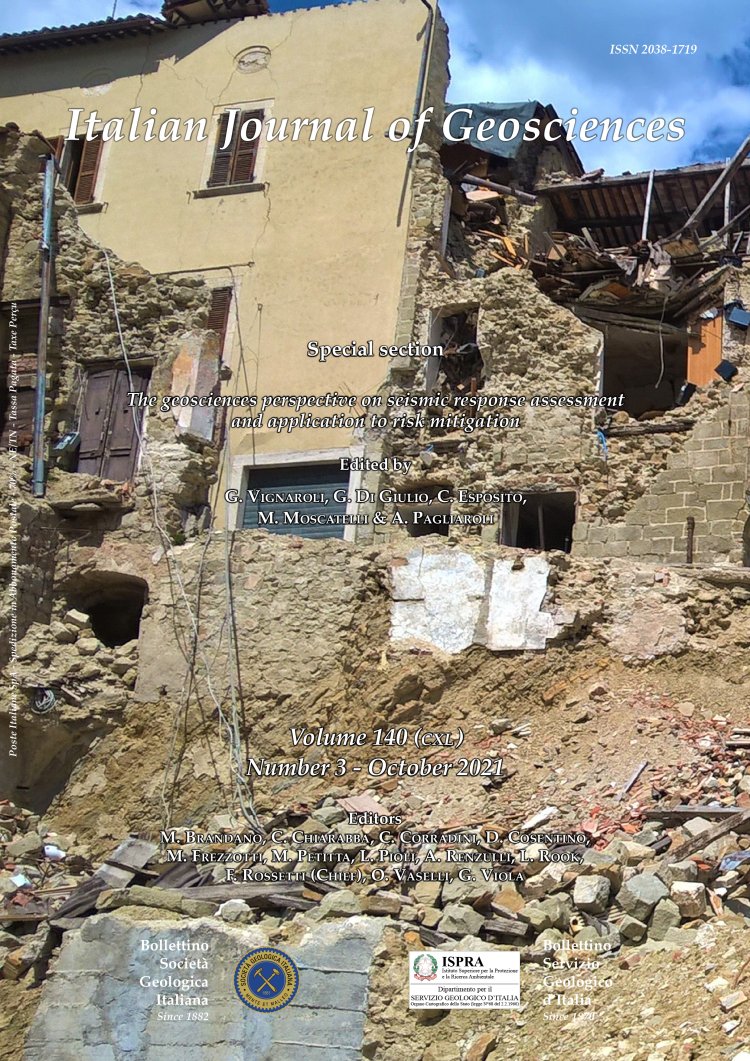

Seismic microzonation in a complex volcano-tectonic setting: the case of northern and western Ischia Island (southern Italy)
Marco Mancini (1), Maria Chiara Caciolli (1,6), Iolanda Gaudiosi (1), Giorgio Andrea Alleanza (2), Giuseppe Cavuoto (3), Monia Coltella (1), Giuseppe Cosentino (4), Vincenzo Di Fiore (3), Anna d’Onofrio (2), Francesco Gargiulo (2), Giuliano Milana (5), Andrea Pietrosante (1), Pier Paolo Pompa (2), Francesco Silvestri (2) & Maurizio Vassallo (5)
(1) CNR IGAG, Consiglio Nazionale delle Ricerche, Istituto di Geologia Ambientale e Geoingegneria, CNR Area della Ricerca Roma 1 - Montelibretti, Via Salaria km 29,300, 00015 Monterotondo Scalo (Rome), Italy.
(2) Università degli Studi di Napoli Federico II, Dipartimento di Ingegneria Civile, Edile e Ambientale,Via Claudio 21, 80125 Naples,
Italy.(3) CNR ISPC, Consiglio Nazionale delle Ricerche, Istituto di Sci- enze del Patrimonio Culturale, Via Cardinale Guglielmo Sanfelice 8, 80134 Naples, Italy.
(4) CNR IGG, Consiglio Nazionale delle Ricerche, Istituto di Ge- oscienze e Georisorse, Area CNR, Via G. Moruzzi 1, 56124 Pisa, Italy. (5) INGV, Istituto Nazionale di Geofisica e Vulcanologia, Via di
Vigna Murata 605, 00143 Rome, Italy.
(6) Università degli Studi di Perugia, Dipartimento di Fisica e Ge-
ologia, Via Alessandro Pascoli s.n.c., 06123 Perugia, Italy. Corresponding author e-mail: marco.mancini@igag.cnr.it
Abstract
Keywords
Get Full Text Supplementary Material